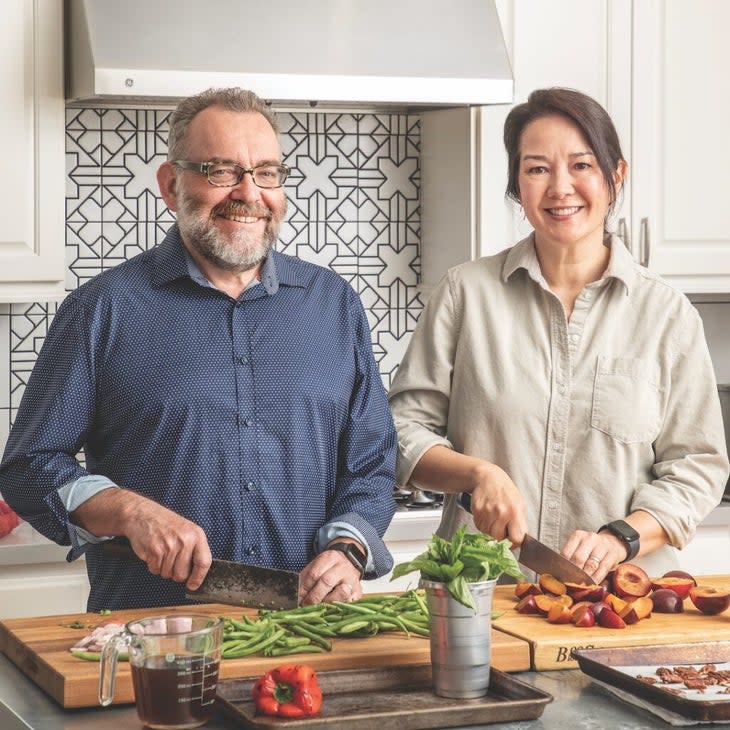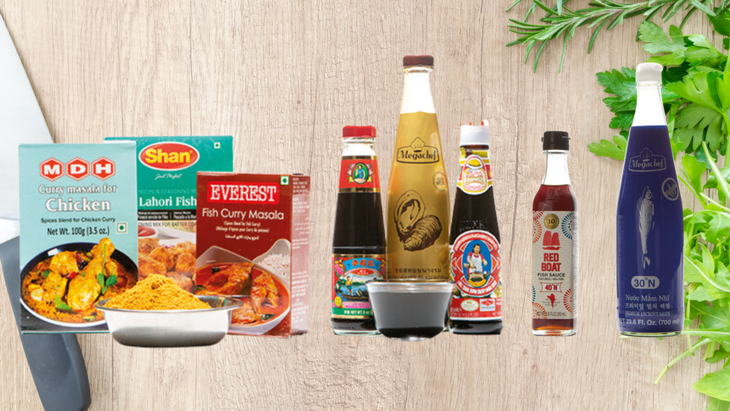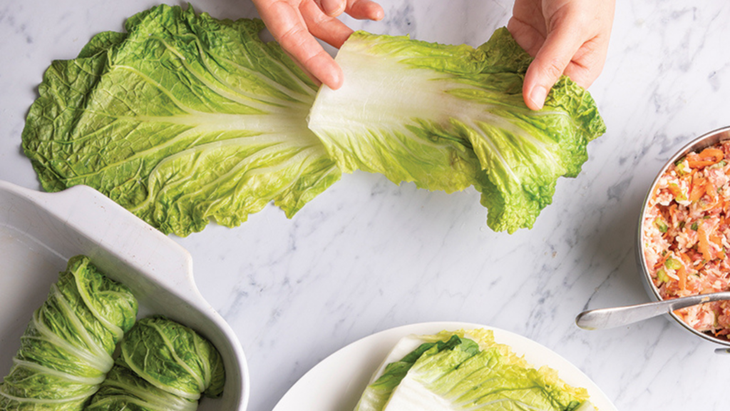Two of the Most Brilliant Food Minds Wrote a New Cookbook that Promises to Improve Your Everyday Cooking
This article originally appeared on Outside
Two James Beard-Award winners have come together to write a cookbook that will elevate your favorite recipes with flavors from around the world. The Global Pantry Cookbook, co-written by Ann Taylor Pittman and Scott Mowbray, explores the use of "pantry treasures" (concentrated flavors like oils, sauces, and spices) in everyday cooking. From miso and gochujang to oyster sauce and Mexican chorizo, the book takes unfamiliar ingredients from intimidating to inspirational. All the recipes are written with basic instructions and ingredients so simple you can take them on the road or camping. recipes When pulling out the campfire grate, elevate a classic hamburger steak by brushing it with miso or marinate short ribs with an umami-rich fish sauce before grilling. Wake up in a tent and know you can still easily whip up a bowl of creamy, cheesy grits with southern red-eye gravy. The opportunities to elevate your adventure fuel are endless.

Pittman is Korean on her mother's side, but grew up in the Mississippi Delta where she says the flavors were "southern and simple." Her grandparents owned a 10-acre farm, so many family dinners were farm-to-table style and very vegetable forward.
However, her mother kept their Korean culture alive and well in the kitchen.
"We lived in these small towns, so my mother couldn't get a lot of ingredients nearby," Pittman says. "So we would make special trips once a month to Memphis to shop at specialty stores. We'd go from eating simple beans, summer squashes, and tomatoes to these salty, sweet, spicy favors that were anything but subtle."
It was common for Pittman's mother to improvise while cooking Korean food because there wasn't always access to every ingredient needed. For instance, she'd make a riff on bibimbap--a Korean dish consisting of rice topped with various vegetables and a little bit of meat. But because she didn't always have the traditional ingredients, she might use a little Jimmy Dean sausage, because that's what was available.
"I've been blending these flavors ever since," Pittman says. "I feel like the Southern and Korean flavors have an affinity for each other."
What Constitutes a Global Flavor?
The Global Pantry Cookbook has a collection of what Pittman and Mowbray call "pantry treasures," or products that are concentrated, fermented, ground, or cooked down to create flavor-packed boosters.
"We tried to choose ingredients that have longevity," Pittman says. "You can hang onto them and play with them at your cooking leisure without feeling a ton of pressure to use them right away."
The Global Pantry Cookbook's dedicated pantry treasures come from a plethora of geographically diverse traditions, from Indian to Korean to Middle Eastern and many others. Pittman's pantry go-to is oyster sauce, a thin sauce made out of oyster extract, salt, water, corn starch, and sugar. It originated in China, but is now used in a number of Asian countries.
"It's thick and glossy and has this savory depth that I love," Pittman says.
She and Mowbray don't always agree on the "best" brands, however, as Pittman always chooses Megachef oyster sauce while he prefers Lee Kum Kee Premium.

Another one of Pittman's favorite staples is Banyuls Traditional Red Wine Vinegar from the southwest of France. It offers a more complex flavor than other vinegars, but you don't have to use a lot to get a big kick.
"Oh, and masala spices were a revelation to me," Pittman adds. "Back in the day, we had generic curry powder we used as a catch-all, but there are all kinds of specified masalas like butter chicken masala, China masala, or fish masala. If I'm running low on butter chicken masala, I start panicking because I have to have it."
Becoming Familiar with the Unfamiliar
When Pittman was younger, she avoided eating Korean foods around her friends for fear of being judged. She was afraid her bowls of spicy kimchi-jjigae and fishy gimbap - filled with unfamiliar scents - would raise eyebrows.
"In my small town in the 1970s, people did not know what kimchi or dried fish was--it was completely exotic to them," she says. "There was always kimchi at my house, and even I was horrified by the smell and how different it was. It seemed to declare itself at a time when I wanted to hide that part of me."
When she was a teenager, though, Pittman had a breakthrough. One night, she had a few friends spend the night and decided to make them japchae noodles, one of her favorite Korean dishes. At first, the translucent noodles scared her friends, but once they tasted them, the delicious flavors were undeniable.
"That was a turning point," Pittman says. "That experience gave me more confidence in being open to that side of who I am and understanding that good food is good food, period, and it's also a huge part of my identity."
It's this fear, this intimidation, that Pittman says keeps people from experimenting with global flavors. There's a lack of familiarity, which makes even sourcing the ingredients daunting. For this reason, The Global Pantry Cookbook slips these new flavors into simple dishes. A good example is Pittman's stuffed cabbage roll recipe, made with an Asian-style riff by using a brown broth made with a base of oyster sauce in lieu of tomato sauce.

Umami, Heat & Brightness
While The Global Pantry Cookbook has pages and pages of concentrated global flavors, Pittman doesn't think people need to buy every pantry treasure at once. She recommends starting with an umami builder, like fish sauce.
"I want people to get over the pungent aroma--because it's no more smelly than some aged cheese!" She says. "A little bit goes a long way. Just brush it onto a steak before grilling it and it'll bring so much flavor."
Another beginner's staple is a source of heat like gojuchang. This condiment is thick and well-balanced, so it's not pure heat, but also has fermented flavor and sweetness.
"The way that this book is successful is if people feel comfortable cooking from it," Pittman says. "There are certain complex dishes that are phenomenal, but it takes the confidence to keep it simple--simple with global flavors."
For exclusive access to all of our fitness, gear, adventure, and travel stories, plus discounts on trips, events, and gear, sign up for Outside+ today.

